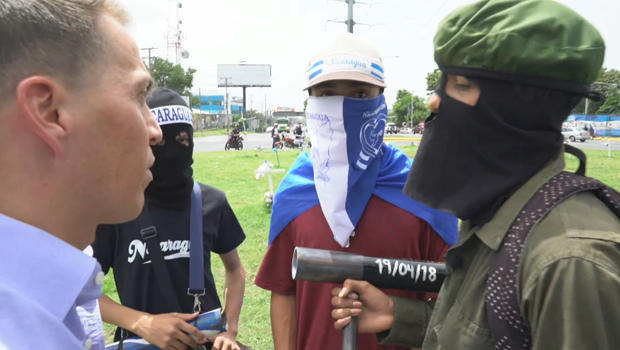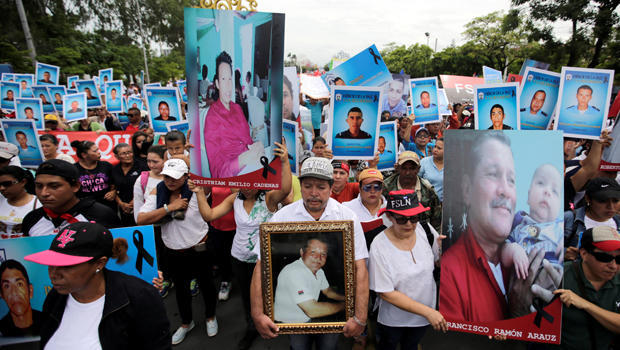There is much anticipation of the repatriation of the POW/MIA from North Korea as a result of the Singapore Summit. As of the time of this post, still none have been returned yet coordination is still underway as stated by the U.S. State Department.
But, it must be understood, the KGB, now FSB maintains files on many American military that in fact ended up in Soviet military hospitals as well as various gulags. To date, Russia for the most part not only denies this but the evidence remains not only from the conflict of North Korea but Vietnam as well.
In June 1951, Lois got a telegram telling her Moore had been shot down while piloting an F-51 Mustang over the South China Sea, off the coast of North Korea. He was reported as missing in action.
On Dec. 31, 1953, the Air Force notified Lois that Harry was presumed dead and was listed as killed in action.
Lois decided she had to move on. She moved to California. She connected there with Harry’s brother, Bob. They reminisced about Harry and grew closer. In 1954, they married. Bob raised Jana as his own daughter, and he and Lois had a daughter of their own, Nancy. They owned a medical-manufacturing business, and in 1996 retired to Star, Idaho.
In August 2002, Lois received a Federal Express package from the Air Force.
In it, a July 19, 2002, memo to the Air Force Missing Persons Branch from the Department of Defense Prisoner of War/Missing Personnel Office read: “(I)t is possible that Capt. Harry C. Moore survived his shoot-down incident and may have been interrogated by Soviet officials. His fate afterwards remains unknown.”
The Moores were shocked. “We thought, goodness gracious, there is still hope he could be alive,” said Bob Moore. “For 50 years we had closure. … Now we have uncertainty. He may have been suffering for all that time in some Russian prison.”
In March 1954, the U.S. Air Force asked the CIA for assistance in finding U.S. servicemen in Communist custody. More here.
***
Related reading: The ‘1205 Document’: A Story of American Prisoners, Vietnamese Agents, Soviet Archives, Washington Bureaucrats, and the Media
***
Mark Sauter began doing some lengthy research on his own for others.
Sauter, whose findings inspired him to co-author a book and start his own blog, was further inspired after the fall of the Soviet Union and the establishment of the U.S.–Russia Joint Commission on POW/MIAs in 1992. For the first time, U.S. officials were given access to Russian archives and former Soviet military personnel, some of whom appeared to confirm that U.S. pilots had indeed been taken prisoner in Russia. While Harry Moore was never named specifically, the commission reportedly turned up potential clues.
One former Soviet airman recalled hearing of a captured U.S. pilot with a similar physical appearance to Harry Moore’s who went on to become an instructor for Soviet recruits. An Estonian witness said in 1993 he remembered a Captain “Harry or Gary Moore” who was shot down in the summer of 1951 and had been interrogated by the Soviet 64th Fighter Aviation Corps. Perhaps the most shocking piece of evidence came in 1997, when U.S. representatives interviewed Aleksey Alekseevich Kalyuzhniy in Ukraine. Kalyuzhniy claimed to have piloted the MiG-15 that took down what may have been Harry Moore’s plane on June 1, 1951, and that he witnessed it land less than a hundred feet from shore.
“[T]he F-51 pilot appeared to be in complete control of the aircraft as it gently landed on the sea,” Kalyuzhniy said, adding that he believed the pilot could easily have survived the wreck. More here.
Going back to 1992, the LATimes reported that Stalin has executed some American prisoners after WWII. Russian investigators declared they have found no evidence including those POW/MIA’s from North Korea or Vietnam.
The Soviet Union under dictator Josef Stalin “summarily executed” some American prisoners after World War II and forced others, some of whom are still alive, to renounce their citizenship, Russian President Boris N. Yeltsin said in a letter to a Senate committee Wednesday.
But no evidence uncovered by Russian investigators so far indicates that American POWs from the Vietnam or the Korean wars were transferred to the Soviet Union, said Dmitri Volkogonov, the senior Russian emissary who read Yeltsin’s letter to the Senate Select Committee on POW-MIA Affairs.
Yeltsin’s letter spoke only in general terms of newly discovered documents indicating “the shocking facts” of some prisoners being executed by the regime of Stalin “and in a number of cases being forced to renounce their U.S. citizenship.”
But the letter also said the rights of all surviving American POWs “are now fully guaranteed” and they are free to return to the United States if they choose. “There are no American citizens forcibly held on the territory of Russia,” Yeltsin said.
*** The CIA has files in addition to the known KGB files, yet as of this writing they are still classified. Question is why?
There are locations of particular question and they include Military Hospital 404 located in Novosysoyevka. Two American spy planes were shot down in the waters near Vladivostok during the Cold War. There were yet another up to as many as 30 planes shot down above Soviet borders between 1950 and 1970 with an estimated 252 American crew members. Other locations possibly include Tayshet, Vorkuta.


Please note page 43, Americans in the Gulag in this document.
Perhaps the WRINGER program, which the collection is housed at the Library of Congress can shed some daylight to a few questions.
Following World War II, thousands of German and Japanese prisoners of war (POWs) were incarcerated in the forced labor camps of the Soviet Union. These POWs were forced to help rebuild the Soviet Union following the Second World War. Beginning in 1946, the Soviet Union began releasing thousands of these German and Japanese POWs to their homeland. U.S. Air Force officers quickly realized the tremendous political and military information these ex-POWs possessed, and initiated an intensive interview program. From 1947 through 1956, U.S. Air Force personnel in the U.S. Zone of Germany interviewed over 300,000 ex-POWs. A similar program was intiated by the U.S. Air Force in Japan upon the return of thousands of Japanese POWs.
WRINGER sources ranged from common laborers to highly skilled technicians. These men were detained in forced labor camps throughout the former Soviet Union. The fact that an ex-POW had no particular knowledge did not make the individual valueless. Almost all German and Japanese ex-POWs had the ability to remember at least the broad details of the places where they had worked. Most importantly, some of them remembered meeting, seeing, or hearing about U.S. and allied servicemen who were also detained in the forced labor camps.
Researchers from the Defense Prisoner of War/Missing Persons Office (DPMO), Joint Commission Support Directorate (JCSD) have initiated a concerted effort to review the WRINGER reports. They are specifically searching for reports that may shed light on the numerous eyewitness sightings of U.S. servicemen reportedly held in Soviet forced labor camps. The WRINGER reports are now declassified and stored in 1,350 boxes at the National Archives’ College Park repository.
In addition, the WRINGER reports have triggered considerable interest among many outside researchers. Scholars of the Soviet period have commented on the detail and accuracy contained in the reports, indicating the importance they have for their own inquiries into those individuals unaccounted-for in the Gulag.
Working under authority of the U.S.-Russia Joint Commission on POW/MIAs, the Joint Commission Support Division (JCSD) of the United States Department of Defense POW/Missing Personnel Office (DPMO)  makes available to the public those documents obtained from archives in the former Soviet Union that pertain to Americans who are unaccounted for from World War II, the Korean Conflict, the Cold War, and the war in Southeast Asia. The documents have been translated from Russian into English.
makes available to the public those documents obtained from archives in the former Soviet Union that pertain to Americans who are unaccounted for from World War II, the Korean Conflict, the Cold War, and the war in Southeast Asia. The documents have been translated from Russian into English.
The documents indexed in this database were retrieved from various official Soviet-era and Russian archives, and were redacted (edited) to remove personal information, as well as information regarding the location, condition, and treatment of the missing Americans. United States law requires redaction of such information in order to preserve privacy.
The archive folders often contain a large number of documents that relate to a particular event or subject. The documents offered to the public at this website were selected from those larger archival files according to their relevance to the actual cases of unaccounted-for Americans. Therefore, selected pages of often larger documents are included in this database. One archive subject heading may contain hundreds or thousands of pages of documents, only a few of which may cite information on the American(s) whose whereabouts is questioned. For example, the classification “TFR65-1” (designating “Task Force Russia”) refers to archive document number 65, page one (and, in some cases, additional following pages). The user may also find the designation “TFR65-23,” which indicates that the document being viewed is page 23 of document 65. Pages 2 through 22 may or may not have been translated and released to the public. This numbering system was established by the DPMO/JCSD personnel who actually examined and retrieved the documents.
The documents have been indexed in order to provide organized searching. The index includes the title of the document (or a statement concerning its subject if the document has no exact title), document date, the total number of pages, name(s) identified in the document, keywords, and comments giving the searcher additional information about the document. Once the search term(s) is entered in the search engine, a list of “hits” will appear. The searcher may click on each “hit” and then click on “view tiff image” link to view the image of the complete document.
More detail is here about the WRINGER program. The document was declassified in 2017. It is an interview, oral summary with Colonel Robert Work from the HQ Air Intelligence Agency.








